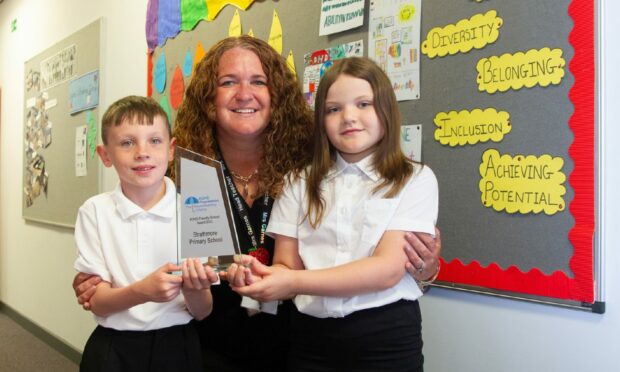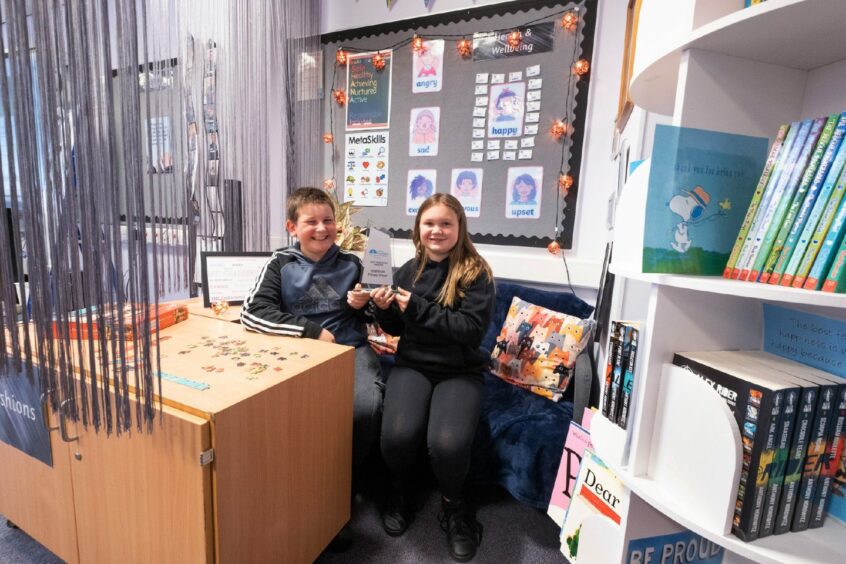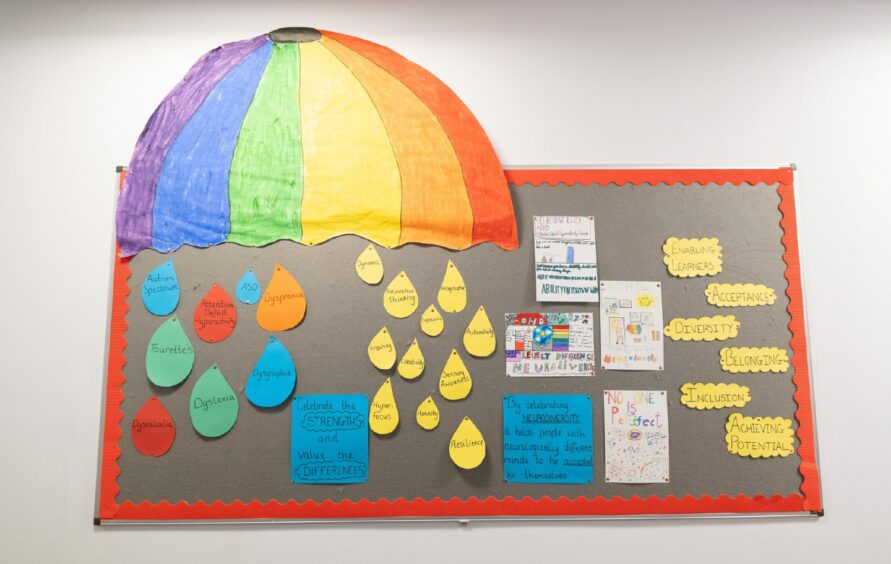There are baskets of fidget toys in every classroom of Strathmore Primary School.
Children can fiddle with resistance bands on their chair legs during lessons.
And they’re no longer startled by the school bell at break and home times.
But when it still all gets too much pupils can retreat to a cosy corner, or their teacher might call a dance break or class stroll to reset.
These are just some of the approaches which have earned Strathmore Primary School the title of Scotland’s first ADHD friendly school.
And they are not just for neurodiverse children, according to head teacher Jennifer Garnes, they have transformed the ethos of the whole school.
Jennifer said: “We are not forcing round pegs into square holes. We are listening to our children.
“We want them to go away feeling happy, not worried.”
Classrooms, she said, are much calmer and the Forfar school’s exclusion rate has plummeted.
Although getting rid of the school bell wasn’t universally popular at first.
Jennifer said: “For some of our children who are neurodiverse the sound of a bell is quite frightening.
“At first there was a minority of parents who thought that was ridiculous – how can you not have a school bell? – but it’s really worked for us”.
Children with ADHD – attention deficit hyperactivity disorder – can struggle to concentrate, sit still and regulate their emotions.
Tactile resources such as fidget toys and resistance bands can help them maintain their focus, and cosy corners and break-out spaces can give the space needed when they are overwhelmed.
Other techniques and resources Strathmore uses include:
- Stretch breaks
- Noodle drumming
- The Daily Mile
- Stand-up not hand-up activities
- Outdoor learning
- Visual timetables
- Toned down wall displays
- Soft starts – children are welcomed and enjoy toast before starting lessons
These approaches, Jennifer and her staff have found, can help all children, not just those with ADHD or other neurodevelopmental disorders, such as autism.
And they are there from the get-go for those with undiagnosed disorders – girls in particular are good at masking symptoms.
Jennifer said: “It’s a universal approach.
“We encourage the children to regulate their own emotions.
“They know that when they feel slightly heightened they can freely go and access the cosy corners, taking a five or 10 minute timer with them.
“There’s a basket of fidget toys in every classroom and we encourage the children to be independent so they know they can help themselves from the basket.
“We have bands round some of the chairs so children who like to fidget can use the bands while they sit in their chairs.”
When teachers see their class is disengaged they might take a ‘movement break’ – perhaps a walk round the school to reset.
Staff are continuing to learn, with new research emerging constantly, and were trained last week in supporting neurodiverse children from birth to age six.
Jennifer said: “A child doesn’t catch neurodiversity, they are born neurodiverse so let’s celebrate that because there are so many positives to being neurodiverse – the way you think, the way you interact.”
The award from the ADHD Foundation was a “tremendous honour”, she said.
“I feel so happy that the hard work of each and every person at Strathmore has been recognised in this way.”
The ADHD Foundation worked with Strathmore and training director Colin Foley said: “The staff have gone above and beyond to make their lessons and their school environment enjoyable, supportive and safe spaces for their students with ADHD and I’m delighted that they are the first school in Scotland to achieve this award.”
















Conversation